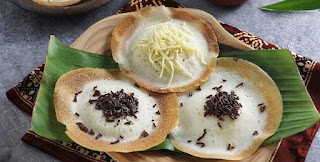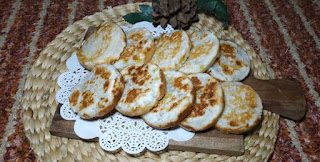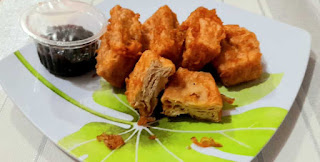Ramadan Culinary From Central Java
Central Java has a variety of unique delicacies and culinary delights that can be used as inspiration for breaking the fast menu.
Entering the month of Ramadan, takjil hunting is an activity that cannot be missed. One of the menus for inspiration for breaking the fast is the typical cuisine of Central Java. Besides being delicious, the dominance of the sweet taste of Javanese cuisine can help balance blood sugar after fasting all day.
Some of these snacks are easy to find and can also be made at home. Want to know any recommendations? Here's the review.
1. Es Dawet Ireng
In contrast to Es dawet which is usually green. Dawet ireng has a black color because it is mixed with straw ash. Even so, straw ash does not affect the taste. Like es dawet in general, this snack is served with ice cubes, coconut milk sauce, brown sugar syrup, and pieces of sticky rice tape. The sweet and fresh taste is suitable for breaking the fast before continuing to eat heavy meals.
2. Ganjel Rel Bread
This bread is also known as xylophone bread and comes from Semarang. The texture is a bit hard because it is made from cassava flour or cassava flour. However, because of that, this bread is good for digestion and keeps you full longer. It tastes sweet with a warming sensation due to the mixture of brown sugar and spices.
Ganjel rel bread is usually served at the Dugderan ceremony in Semarang to welcome the holy month of Ramadan. This is because the people there believe that eating ganjel rel bread can make a person stronger in fasting.
3. Gethuk
Gethuk is made from cassava and has a sweet and savory taste. There are various kinds of gethuk, such as gethuk lindri and gethuk goreng. The manufacturing process for both is similar. Cassava is steamed and mashed, then mixed with brown sugar, salt, and sometimes coloring before being shaped and served with grated coconut.
For fried gethuk, the gethuk dough is then fried in hot oil until the outside is crispy and brown. Currently, fried gethuk is also available in various flavors such as cheese, chocolate, pineapple, and durian.
4. Serabi Solo
Who doesn't know pancakes? This Central Javanese dish is made from a mixture of rice flour, coconut milk, and sugar which is cooked using a frying pan. Therefore, the serabi solo has a crispy edge with a soft and melty center. The texture is so flexible that it can be rolled up and wrapped in banana leaves.
Besides being served plain, the middle of the pancake is also usually filled with pieces of jackfruit, banana, chocolate sprinkles, or grated cheese for more flavor variations.
5. Wingko Babat
For fans of sticky rice, wingko tripe is a good choice for breaking the fast. Consisting of a mixture of glutinous rice flour, sugar, and grated coconut in a flat shape, the wingko dough is then baked until both sides turn brown. To make it more delicious, serve this food with tea or coffee.
6. Ice Ship
Solo's signature ice boat is made from a mixture of shaved ice, coconut milk, and chocolate syrup from brown sugar which is then eaten with a piece of white bread. Therefore, this cold snack is not only sweet but also quite filling. In Solo itself, ice boats are peddled with carts shaped like the ship that inspired the name.
7. Tahu Petis
The last culinary specialty of Central Java is tofu petis. As the name implies, the crispy fried tofu slices are split open and filled with petis which tastes sweet and slightly salty to create a rich blend of flavors. Don't forget to add cayenne pepper for a spicy sensation.
The petis used is usually in the form of shrimp paste. Besides being used as filling, sometimes petis is served as a dip for friends to eat tofu. This food can be an option for those of you who are tired of eating regular fried foods.
So, those are some typical Central Java culinary delights that you can choose to color iftar. Happy break fasting. (Sekarangsayatahu kultur)







Comments
Post a Comment